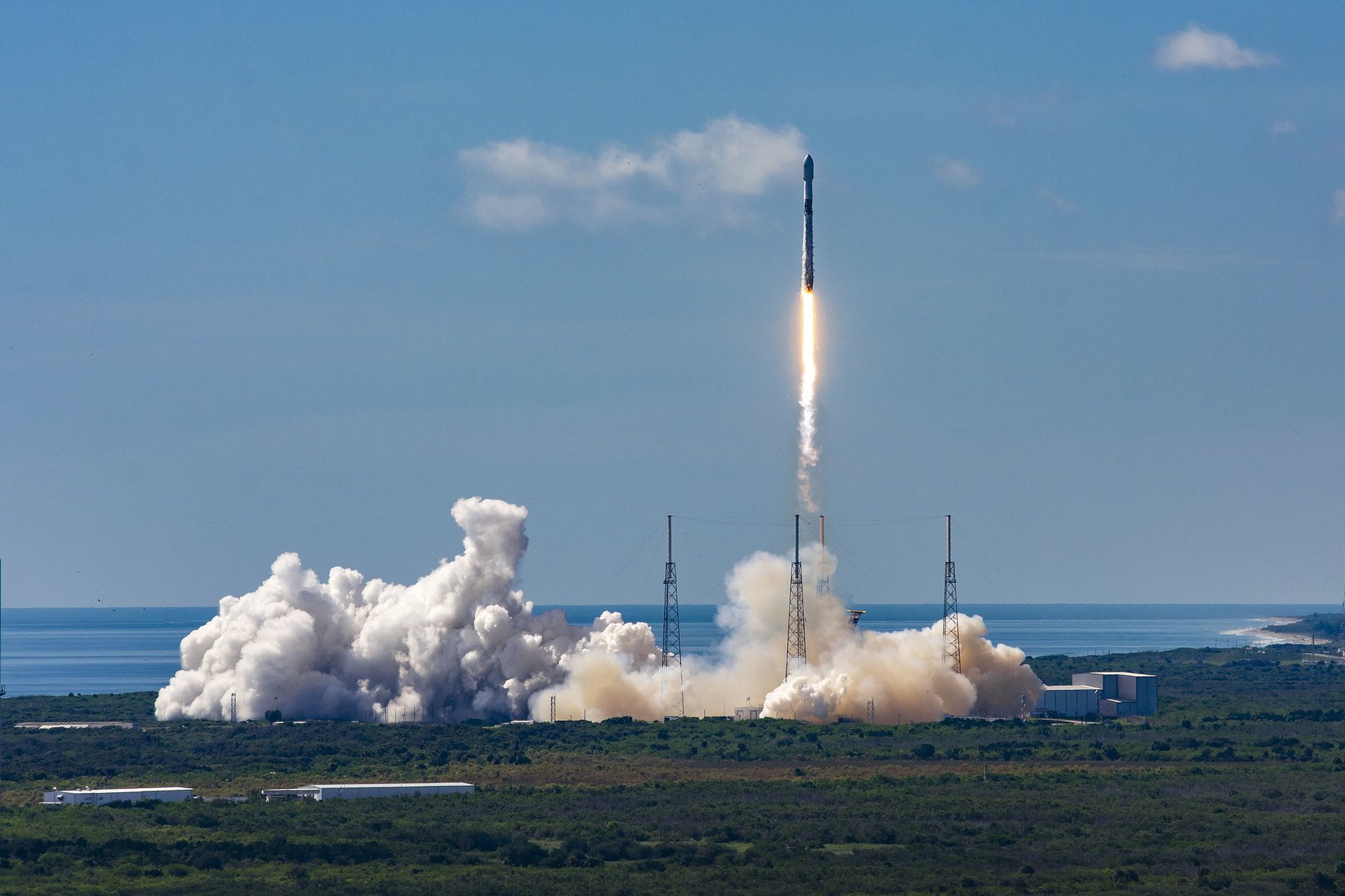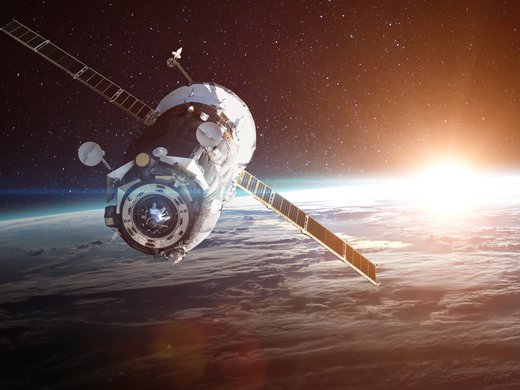The new communication revolution is around the corner: space-based broadband internet will soon be available everywhere on Earth. SpaceX begun testing Starlink satellites this summer and is inviting users from the general public to participate. With four billion people around the world currently without any access to broadband internet, the potential market for these space-based internet services is huge, as is the potential effect of providing internet access in remote places. Yet, while the technical challenges to providing internet services through these satellites are fast being met, the governance and environmental challenges still need to be addressed.
What Are Mega Constellations and What Will They Do?
A mega constellation is a network of thousands, or tens of thousands, of satellites orbiting Earth and working as one system. The dramatic decrease in the size and cost of hardware enables the introduction of mega constellations at a reasonable cost, allowing the provision of space-based internet using mega constellations of satellites in low Earth orbit. With the steady increase of demand for data worldwide, space-based internet is expected to provide a viable alternative to the more traditional internet service providers.
Companies such as Hughes, Viasat and Gilat have been providing satellite-based internet to regions with underdeveloped infrastructure for a long time. However, their technology uses the high geostationary orbit (around 36,000 km above the Earth), resulting in internet connections that are slow and expensive. In contrast, the emerging technology of mega constellations will operate from low Earth orbit (160 km to 2,000 km above the Earth).
A Global Race for Disruptive Innovation
With nearly half of Earth’s population currently without access to broadband internet, the potential market to tap is huge. The main beneficiaries will be users in developing countries or in remote areas of developed countries lacking sufficient ground-based infrastructure. In Canada, several First Nations communities will greatly benefit from this service. Space-based internet will also serve airplanes, ships, trains and other vehicles.
Two companies are well on their way to providing space-based internet in the coming years: SpaceX and the United Kingdom-based OneWeb. They have obtained licensing, launched many satellites and successfully conducted initial tests. Internet giants are also looking to enter the market: Amazon introduced the Kuiper project, Facebook is working on its Internet.org and Athena projects, and Google invested in Starlink and backed the Loon project.
With nearly half of Earth’s population currently without access to broadband internet, the potential market to tap is huge.
Governments around the world are involved, promoting their own corporate champions. The Government of Canada, for example, has partnered with the Ottawa-based company Telesat to offer high-speed internet across remote areas of Canada and beyond. China is looking to enter the race for space-based internet with its Hongyun project and is testing space-based “Internet of Things” communications technology.
Space-based internet will enable people to work really remotely — not just from their kitchen table in a downtown apartment, but from a cabin in the middle of the Boreal forest; there’s certainly a demand amid the COVID-19 pandemic and employees’ move to work from home. Elon Musk estimated that Starlink satellites could yield US$30–50 billion in revenue annually. However, the path to commercial viability is littered with uncertainty and challenges.
Space Pollution
Since the launch of the Sputnik 1 in 1957, more than 9,500 objects have been launched into space; currently, 2,600 satellites are orbiting Earth. With the development of mega-constellations, the number of satellites in orbit willincrease dramatically. OneWeb is seeking a licence to launch 48,000 satellites, and SpaceX is planning on 42,000 satellites.Astronomers are concerned about light pollution from this significant quantity of bright satellites, prompting companies to consider reduced satellite brightness. Radio astronomy is also at risk, as the International Astronomical Union cautioned in a statement on June 3, 2019.
Moreover, Earth’s orbit is already heavily polluted with space debris. The continuous and accelerating growth of orbital debris brings us ever closer to the point when collisions between existing debris exponentially increase its quantity, even without the introduction of new debris — an effect known as the “Kessler syndrome,” for the physicist who first theorized this scenario. Satellite collisions are a prime cause of increased space debris; with the exponential rise in the number of satellites, the risk of collisions also significantly increases.
All is not lost — satellites nearing the end of their life can be de-orbited. There are regulations in place requiring such de-orbiting and there are ongoing initiatives to adopt further regulation. Companies from around the world, including the US, Russia and Japan, are developing technology to remove existing debris. However, the concern is real.
Governance Disruption
Space-based internet has the potential to bypass national regulations and supervision. If services are provided directly to the end-user, without a domestic intermediary, service providers will be regulated by their home governments, bypassing their consumers’ local governments. This routing will significantly restrict governments’ capacity to censor or otherwise limit the internet access of their citizens. We can expect a pushback from some national governments attempting to maintain their control.
The case of OneWeb, which is headquartered in London, England, demonstrates the strategic importance of space-based internet operators. In March 2020, OneWeb was having financial difficulties and was put up for sale. Whoever purchased it would be receiving an invaluable piece of global infrastructure. The bidding was thus much more than a commercial issue; it involved geopolitics of the highest levels. In the end, it was a consortium that prevailed, a joint effort including the Indian conglomerate Bharti Enterprises, and to which the UK government contributed half of the winning bid’s funds, which kept the company, and its technology, in British hands. As UK Business Secretary Alok Sharma said in a statement: “This deal underlines the scale of Britain’s ambitions on the global stage.”
Conclusion
Over time, technological revolutions in communication and transportation have made the world a smaller place, driving economic growth, cultural exchanges and still further technological development. Space-based internet promises yet another revolution, providing broadband internet connection everywhere, allowing true remote working. It may also open a new road to the internet highway that has been denied from billions of people till now because of insufficient infrastructure and government censorship. At the same time, it poses challenges for astronomical research, the environment and policy development worldwide. How these companies, their home governments and the governments in states in which they operate handle those challenges will determine our future access to broadband internet and to space itself.



